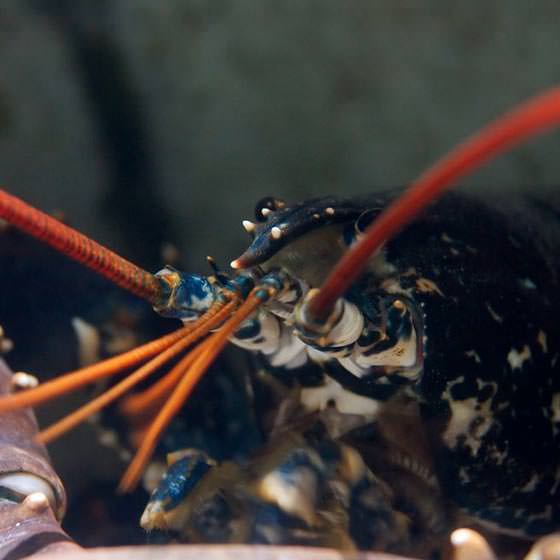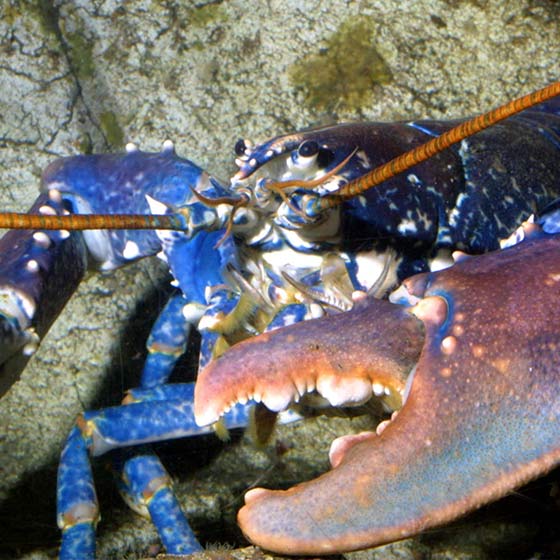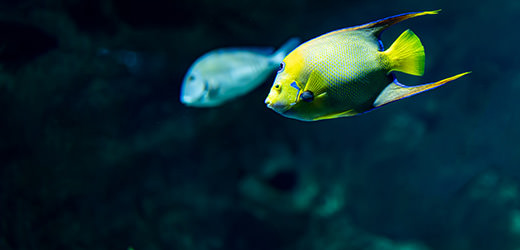Biology
The common lobster, recognizable for its royal blue colouring when alive, can be found on rocky seabeds 20 to 100 m below the surface.
Hidden under cover during the day, it comes out at night to search for food – molluscs, worms, crustaceans and dead animals – which it catches using its two claws of different shapes and sizes. The large one is used for crushing and the other, more delicate, one has saw-like teeth that allow it to cut up its food.
It uses its two pairs of antennae to locate its prey. One is smaller and senses smell, while the larger one is used for touch.
The lobster is a solitary creature that can only stand the presence of its fellow creatures during the reproductive period. Mating takes place after the female sheds her shell. She then stores up the sperm, using it to fertilize her eggs for the next two years.




